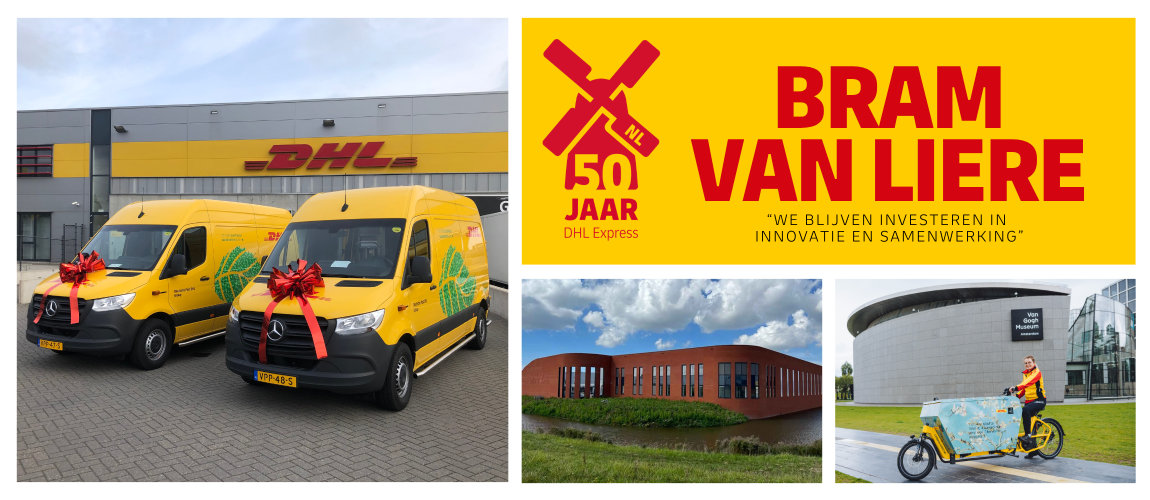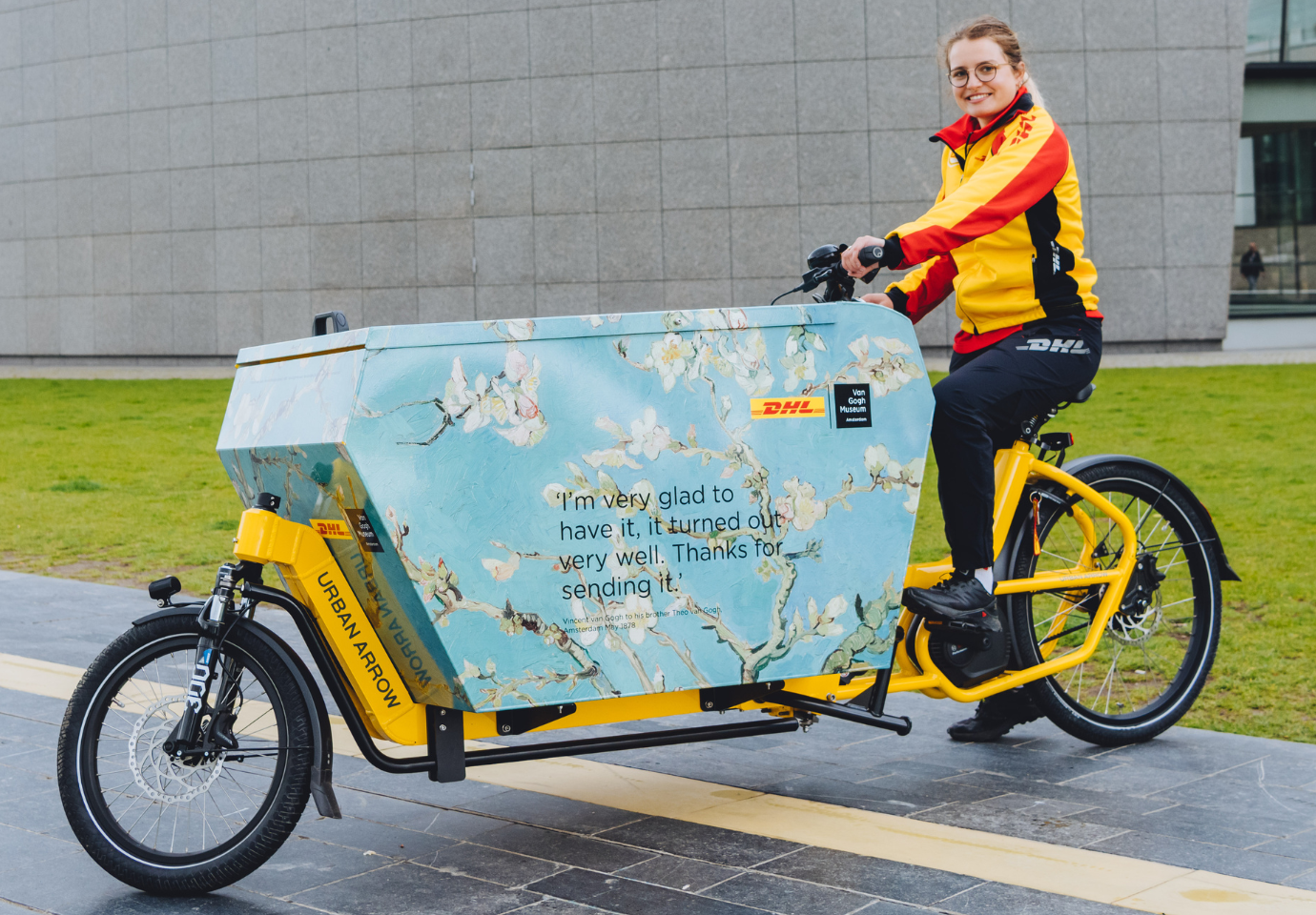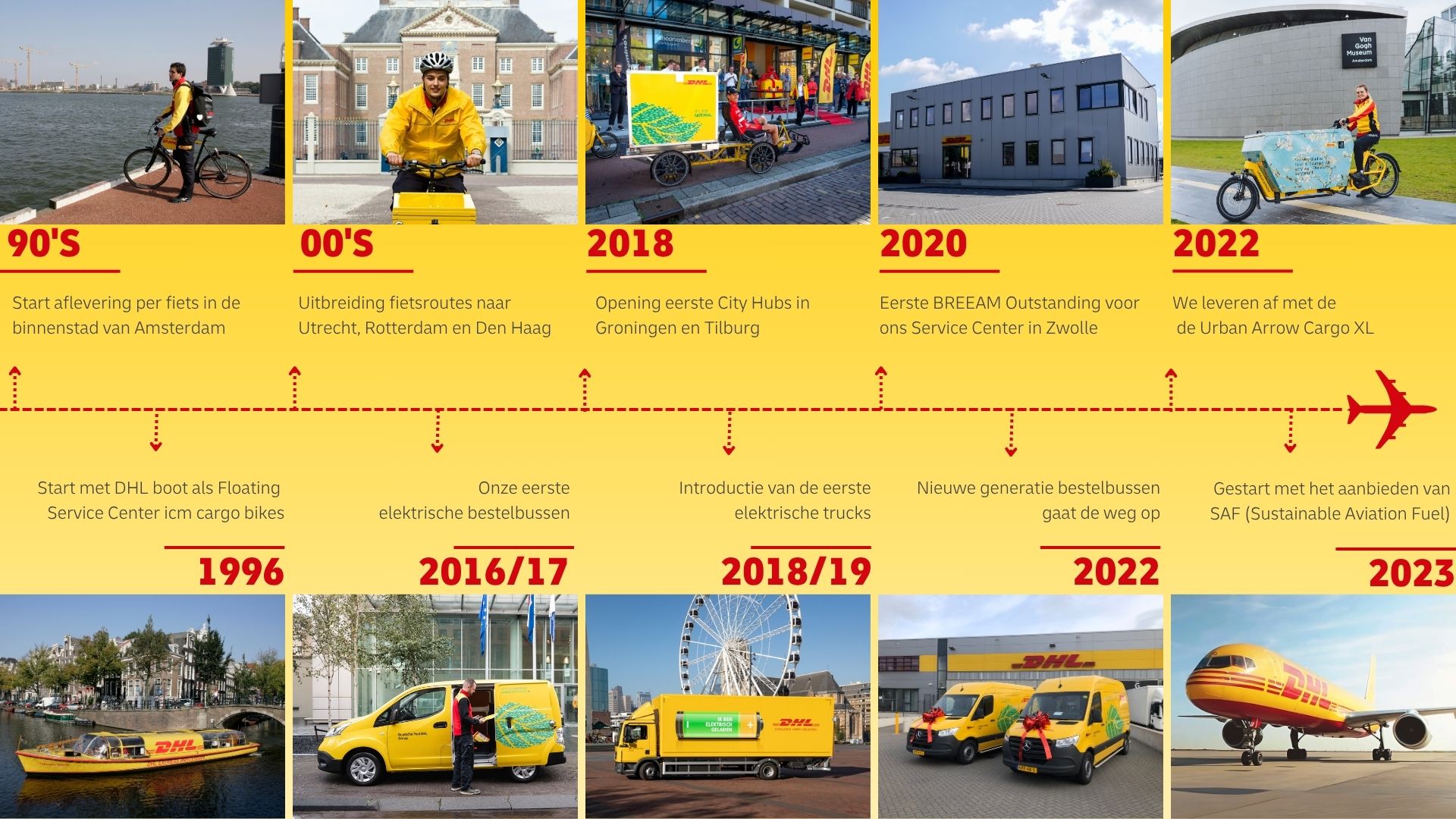
In celebration of the 50th anniversary of DHL Express Netherlands, we spoke with Bram van Liere, Corporate Affairs and Sustainability Manager. Bram has been with DHL Express for over ten years and is involved daily in making our logistics chain more sustainable. Whether it’s electric vehicles, energy-efficient buildings, or biofuels for airplanes, Bram knows exactly what steps we have taken in recent years to reduce our CO₂ emissions.
"Sustainability is not just about big changes," he says, "but also about taking small steps in the right direction. Together, they make a significant difference."

Bike couriers and CityHubs: local, quiet, and clean
DHL Express's sustainability journey in the Netherlands began back in the 1990s. “We started with mountain bikes and backpacks,” says Bram. “Now, there are 35 to 45 cargo bike routes operating daily in cities like Amsterdam, Rotterdam, The Hague, Groningen, and Utrecht. Modern bikes, such as the Urban Arrow and the Nijland Chariot, can carry much larger volumes than before, enabling over 2,100 deliveries per day.
An important aspect of this is the network of CityHubs: compact distribution points just outside city centers. Shipments are delivered from larger sorting centers like Schiphol or Eindhoven and then distributed by cargo bike. This allows us to deliver and collect packages locally and without emissions.
.png)
Electric vehicles: a growing fleet
Since 2016, DHL Express Netherlands has been investing in electric vehicles. Our fleet now consists of a mix of light and medium-duty vans from various brands. Additionally, electric trucks have been operating since 2018 for heavier transport.
“In recent years, we have been able to make increasingly significant strides,” says Bram. “The new generation of electric vehicles has a greater range, allowing us to deliver to more remote areas electrically.” There are also challenges: “Due to the overloaded Dutch electricity grid, we do not have the capacity to charge more buses simultaneously everywhere.”
.png)
Buildings that make a difference
Not only on the road, but also in our buildings, we take a critical look at energy consumption. Various steps have already been taken at different locations to enhance energy efficiency.
All of our facilities are equipped with solar panels, which supply nearly 15% of our own energy needs and have returned 14% to the grid. In addition, all of our newest buildings since 2018 have received a BREEAM label, a sustainability standard for the built environment. “In our latest buildings, we have gone gas-free, and since 2021, all of our properties worldwide are constructed according to the latest sustainability requirements,” explains Bram.
.png)
Reducing the Footprint with GoGreen Plus
The majority of our ecological footprint comes from air transport. That’s why DHL Express is investing in Sustainable Aviation Fuel (SAF), a more sustainable alternative to fossil jet fuel, which allows us to actually reduce our emissions. Customers can also participate: through GoGreen Plus, they can contribute to the use of SAF within our global network.
“That works through the so-called Book & Claim model,” Bram explains. “Customers can lower their scope-3 emissions by using SAF for their shipments.”
Learn more about GoGreen Plus and SAF

Continuing to Improve
DHL Express Netherlands has been working step by step for years to reduce its CO₂ footprint. Whether it's using bikes in the city, electric trucks, energy savings, or sustainable jet fuel: we are constantly looking for smarter and cleaner ways of working throughout the logistics chain.
“And we’re far from done,” says Bram. “We will continue to invest in innovation and collaboration so that we can keep moving forward for the next fifty years, all while reducing emissions.”